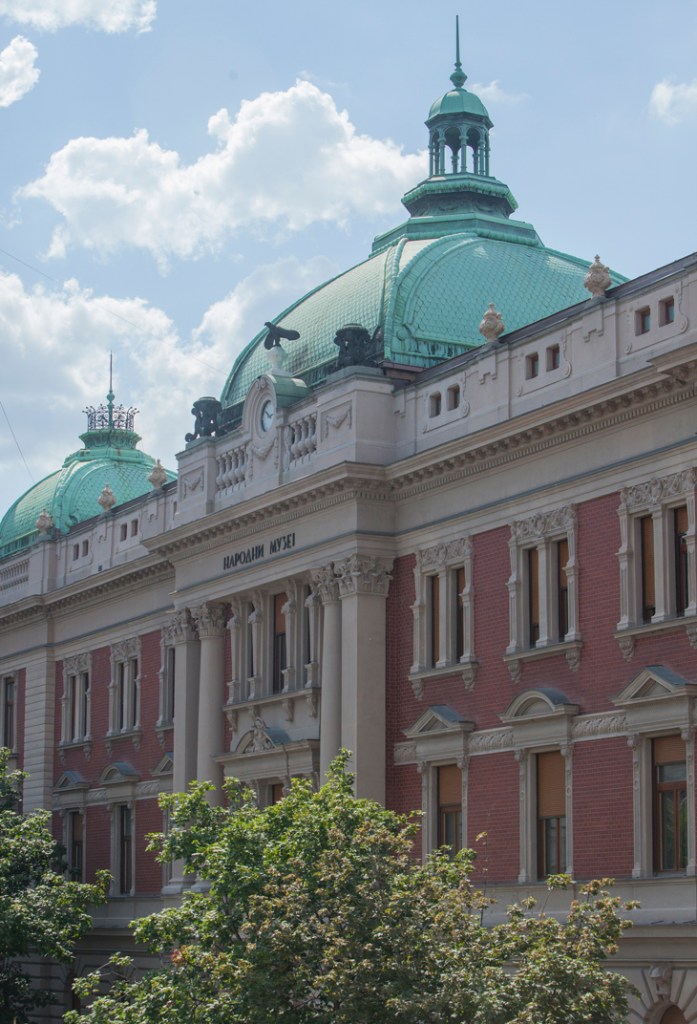How many European capitals can boast a main street lined with galleries, print dealers and ceramics shops? Stroll down Knez Mihailova and you’ll see that Belgrade, after all it’s been through, is still a city of artists.
If one function of culture is to build bridges, however, Serbia’s cause has not been helped by the fact that its two most important museums have been closed for the greater part of the 21st century. Now, at last, they are open again. The Museum of Contemporary Art (MoCAB) reopened last year and the National Museum finally welcomed visitors once more in June.
Nobody’s quite sure how it took 10 and 15 years respectively to refurbish these two state museums, but politics have certainly played their part. Belgrade was in a different, chaotic country when the National Museum closed its doors in 2003. What remained of Yugoslavia had become Serbia and Montenegro and the prime minister had just been assassinated.
Since then, Serbia has gone from pariah state (in Western eyes) to the front of the EU accession queue. But despite its cultural richness and bohemian charms, Belgrade is seldom visited by tourists, beyond the trickle of backpackers heading for the gritty bars of Savamala and Dorćol. The reopening of MoCAB and the National Museum should help to change this.
Nationalist politicians have interfered alarmingly with cultural institutions in Eastern Europe in recent years: in Budapest and Gdansk, for example, museum programmes have been hijacked by governing parties. So it is heartening to discover that the National Museum in Belgrade, in a country where nationalism still haunts the political scene, has no nasty surprises in store.
The National Museum in Belgrade. Photo: Luke Banda

Housed over three floors of a neoclassical former bank building on Republic Square, this is a serious museum that is confident in the strength of its 400,000-piece collection. The ground level covers prehistory and classical antiquity, including 9,000-year-old artefacts from Lepenski Vir, the oldest urban settlement in Europe. There’s a remarkable collection of coins from the ancient mint at Mount Rudnik and a wealth of Roman material (I had no idea that as many as 18 emperors, including Constantine the Great, were born in what is now Serbia). The decorative swirls on the frame of a two-wheeled votive chariot, excavated near Pirot in 2013, are so vivid as to look freshly painted.
The middle floor is furnished with Byzantine and medieval Serbian treasures, from icons to jewellery and ornamental bowls, while the top is devoted to painting: one half focuses on Yugoslav art, especially pre-war, while the other takes you on a selective romp through European art from Paolo Veneziano to Picasso. Impressionism is particularly well represented, with works by Monet, Renoir, Degas and Cézanne. Rather than projecting a selective national narrative, the museum tells a story of richness and breadth: of the multiple influences left on the region by succeeding civilisations and of Serbia’s contribution to wider currents in European culture. Perhaps this is why it took so long to reopen.
MoCAB, Belgrade. Photo: Relja Ivanić

MoCAB stands in parkland in New Belgrade, occupying a symbolic position across the river Sava from the ancient Kalemegdan Fortress. Opened in 1965, Ivan Antić and Ivanka Raspopović’s modernist temple was intended to preach high culture to the people. Unlike its neighbours, which were in the Eastern bloc, Tito’s non-aligned Yugoslavia enthusiastically supported contemporary art, including the radical post-1968 conceptualist movement that became known as the New Art Practice. Even in the ’80s, after Tito was dead, Yugoslavia was still a country in which you could see an avant-garde art collective interviewed on prime-time TV.
The building consists of six jutting concrete cubes that seem somehow to float on top of glass walls. Inside, there are no corridors or partitions: only light, space and flights of stairs that spirit you effortlessly between the five levels. These afford multiple vantage points on the floors below, allowing viewers to form their own connections between exhibits.
MoCAB, Belgrade. Photo: Relja Ivanić

After the bloody wars of the ’90s, the Yugoslav successor states spent two decades rewriting history (and art history) to fit their respective national narratives. In recent years, the cultural heritage of socialist Yugoslavia has begun to be reconsidered in the region’s contemporary art scenes. The reopening of MoCAB, with its unparalleled Yugoslav art collection, represents a major step in this reckoning.
While Yugoslavia’s socialist-era architecture is currently enjoying an international moment at MoMA (in ‘Toward a Concrete Utopia’; until 13 January 2019), its art remains little known beyond a handful of figures like Marina Abramović and Neue Slowenische Kunst (NSK). MoCAB has relaunched with ‘Sequences’, an exhibition that foregrounds some of the main trends in 20th-century Yugoslav art — from localised versions of modernism such as Slovene constructivism to uniquely Yugoslav movements like Zenitism. It’s thrilling to encounter schools of art that you never knew existed.
It will require a skilful balancing act for MoCAB to reintroduce Yugoslav art to the world while fulfilling its contemporary responsibilities to the Serbian art scene – but a major Marina Abramović exhibition planned for next year ought to satisfy both of these aims.
From the October 2018 issue of Apollo. Preview and subscribe here.


